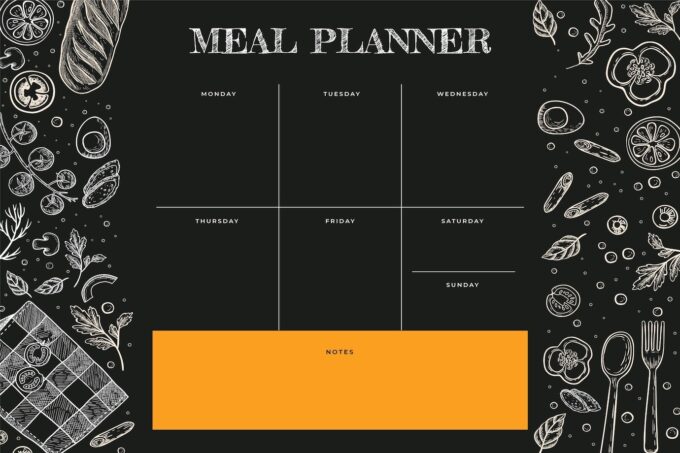Starting a restaurant can be a dream come true, but it’s also one of the most challenging business ventures. The thrill of bringing your culinary visions to life is coupled with the daunting reality of managing finances effectively.
Navigating the initial stages without depleting your resources requires strategic planning and smart decision-making. In this comprehensive guide, we’ll explore tried-and-tested tips to keep your finances afloat as you embark on this delicious journey. Brace yourself for a deep dive into the art of cost-saving in the restaurant business!
Create a Detailed Business Plan

A well-crafted business plan is your roadmap to success in the competitive restaurant industry. It’s not just a document for attracting investors but a strategic tool for meticulous financial planning. A robust business plan outlines your business concept, market analysis, operational strategies, and most importantly, your financial projections.
By carefully forecasting expenses and revenues, you can allocate resources wisely, avoiding unnecessary expenses. Ensure your plan includes detailed sections on market research, menu design, staffing, marketing strategies, financial projections and even where to find restaurant chairs to set a solid foundation for your culinary venture.
Choose the Right Location
The adage “location, location, location” holds profound truth in the restaurant industry. A prime location can significantly reduce your marketing expenses as foot traffic alone can be a powerful driver of business. However, prime does not always mean the most expensive. To find a balance, conduct thorough location research.
Consider the demographics, local competition, accessibility, and visibility. Sometimes, a slightly off-beat path with lower rent but a unique concept can become a destination spot. Analyzing the pros and cons of each potential location can lead to substantial long-term savings.
Optimize Menu Planning

Your menu is not just a list of dishes; it’s a strategic tool for cost control and brand representation. Engaging in menu engineering allows you to analyze the profitability and popularity of each dish and adjust offerings accordingly. Focus on creating a menu that maximizes the use of common ingredients to reduce waste and negotiation power with suppliers.
Also, consider the cost-effectiveness of each item and its preparation time. Introducing signature dishes that are unique but inexpensive to prepare can set your restaurant apart and keep costs under control.
Efficient Staffing Strategies
Labor costs are one of the most significant expenses in the restaurant business. Efficient staffing goes beyond just hiring; it involves scheduling the right number of employees for each shift and ensuring they are well-trained. Avoid overstaffing, especially during slow periods, and consider cross-training your staff so they can perform multiple roles during their shift.
This flexibility can lead to a more dynamic, responsive, and cost-efficient workforce. Remember, a well-trained, satisfied staff is less likely to leave, reducing your costs for recruitment and training.
Smart Equipment Investments
Investing in quality kitchen equipment is non-negotiable for a restaurant’s smooth operation. However, smart choices can lead to significant savings. Consider purchasing gently used equipment or leasing options for expensive items. Regular maintenance of your equipment extends its life and ensures it runs efficiently, reducing repair costs and downtime. Also, investing in energy-efficient appliances, though initially more expensive, can save you money in the long run through lower utility bills.
Inventory Management

Effective inventory management is crucial to prevent wastage and ensure the freshness of your ingredients. Implement a system to monitor your stock levels, track your usage, and predict your needs. Regular inventory checks help identify and minimize waste, theft, or over-ordering. Establishing good relationships with your suppliers can also lead to more flexible delivery schedules, ensuring you have just enough stock without unnecessary surplus.
Cost-Effective Marketing
In today’s digital age, cost-effective marketing strategies can significantly boost your restaurant’s visibility without breaking the bank. Leverage the power of social media platforms to engage with your community and showcase your offerings. Collaborate with local food bloggers or influencers to reach a wider audience. Hosting special events or offering promotions can also generate buzz. Remember, word-of-mouth is powerful and free, so providing exceptional service and experience is your best marketing tool.
Energy Efficiency

Restaurants are energy-intensive businesses, but there are numerous ways to reduce these costs. Invest in energy-efficient lighting, appliances, and HVAC systems. Regular maintenance of your equipment ensures they operate at peak efficiency, reducing energy wastage. Consider natural lighting where possible, and train your staff to be mindful of energy conservation practices. Small changes, like installing programmable thermostats or energy-efficient bulbs, can add up to significant savings over time.
Negotiating with Suppliers
Building strong relationships with your suppliers can lead to better pricing, quality, and service. Don’t hesitate to negotiate prices or ask for discounts, especially when buying in bulk. Be loyal but also keep an eye on the market to ensure you’re getting the best deal.
Remember, your suppliers are key partners in your business, and mutual respect can lead to mutually beneficial arrangements. Regularly reviewing contracts and being aware of market trends can empower you to negotiate more effectively. Cultivating a network of multiple suppliers can also provide leverage and security in your negotiations.
Government Incentives and Grants
Explore government incentives and grants available for restaurant startups. Many local, state, and federal programs offer financial support for small businesses, especially those that contribute to economic growth or are eco-friendly. Research and apply for these opportunities as they can provide significant financial relief.
Don’t overlook tax incentives, which can also lead to substantial savings. Staying informed about changes in legislation and maintaining a good relationship with a financial advisor can ensure you’re always leveraging available benefits. Regularly attending industry workshops and seminars can also keep you informed about new opportunities.
Monitor and Adjust

The restaurant industry is dynamic, and successful restaurateurs are those who adapt. Continuously monitor your expenses, analyze your sales data, and adjust your strategies accordingly. Stay informed about industry trends and customer preferences. Be open to feedback and willing to make changes to your menu, operations, or marketing strategies.
Saving money is an ongoing effort, and staying proactive is key to long-term success. Regularly reviewing your business performance against industry benchmarks can offer insights and drive improvements. Embrace technology to track and analyze data for more informed decision-making.
Summary
Starting a restaurant involves many challenges, but with careful planning, strategic decision-making, and continuous adaptation, it’s possible to navigate these waters successfully. By implementing these cost-saving strategies, you can turn your culinary dream into a thriving reality. Keep your passion alive, stay committed to excellence, and watch your restaurant flourish!









